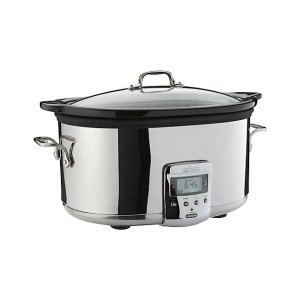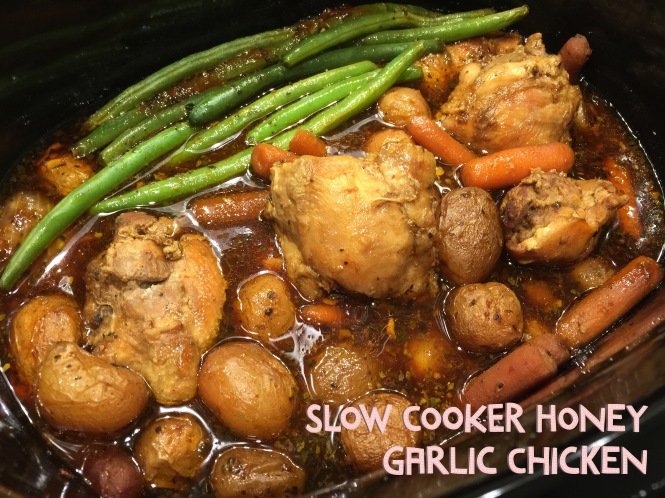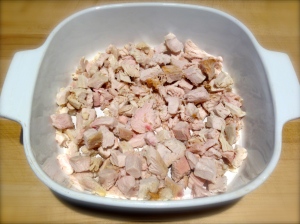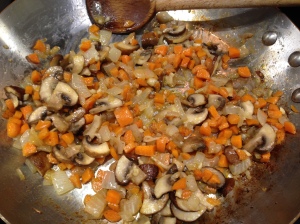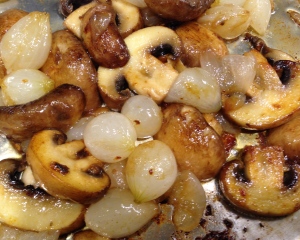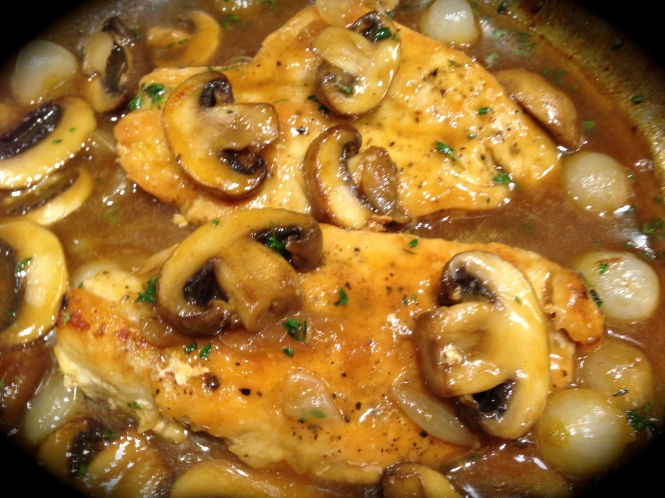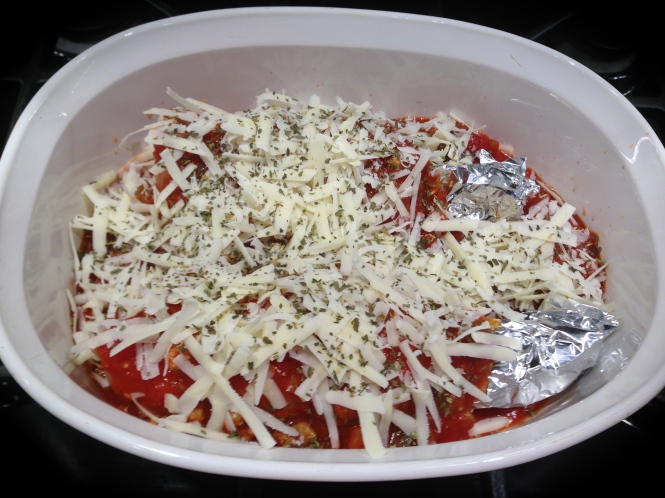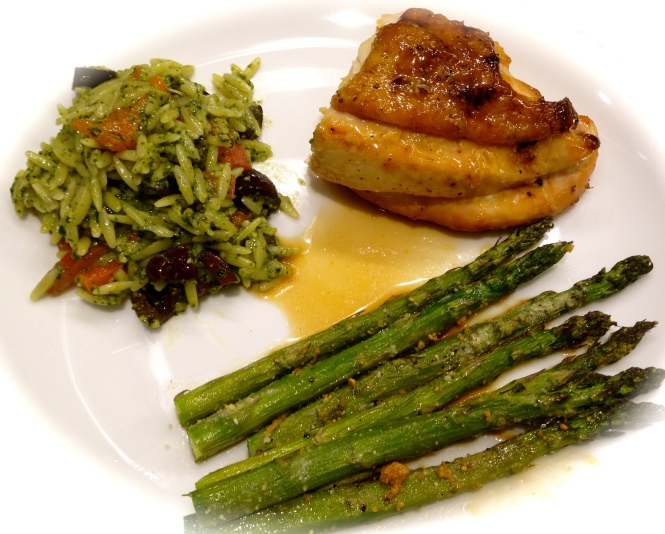We are more and more becoming a society of extreme convenience – one click Amazon shopping, car vending machines, online ride booking, online grocery shopping and of course to go along with that the ever popular meal kits. You see meal kits advertised a lot online and now the grocery stores have thrown their hats into ring to grab a corner of that market. Personally I suggest trying one from the grocery store so that you can get a feel for them without being locked in to some sort of package deal and discover at the onset that you are not a fan and have a full month of meal kits to plow through.
Meal kits have their benefits. For me since my life has been anything but normal these past few months meal kits helped me force myself not to eat fast food or meals loaded with carbs. So when I finally saw one in the grocery store I decided to try it. I realize I normally post recipes but since meal kits give you just about everything you need to prepare a specific meal (things not included are basically salt, pepper, olive oil…) I decided to write a review of a meal kit I tried and the lessons I learned in the process.
So, the other day I bought a meal kit from King Soopers (Colorado’s Kroger) that sounded like something I might enjoy – Chicken Marsala with Broccoli and Mushrooms (although it included peas as well).

You have to admit the picture looks enticing and so I ventured into this current fad of preparing quick but more upscale meals with great anticipation.
Upon first glance you will notice that there is no chopping. Now to some this may be a godsend but to me I find meal prep very relaxing. But that’s just me and so I bit the bullet and let that pleasurable part of cooking process take a back seat to convenience.
When I opened the meal kit this is what was inside…

This is a meal for two and it included two six ounce boneless skinless chicken breasts, broccoli, enough mushrooms to feed an army (luckily I really like mushrooms) a small package of peas and three one ounce containers of low fat cream cheese and two small packages of something called chicken demi glace concentrate that contains milk and sulfites…


These particular meal kits are designed to be one pan meals where you cook everything in the pan provided. Prep was very minimal, it was recommended to rinse the vegetables and pat them dry before cooking them, then mixing them with some olive oil and salt and pepper. The directions did not state that the mushrooms should not be washed and for any novice cook that could have resulted in overly mushy mushrooms. I think the directions should have specifically stated just to rinse the broccoli. But that’s me.
After you rinse the broccoli, pat it dry and mix the broccoli, mushrooms and peas together with some olive oil and salt and pepper (the instructions said to use one tablespoon of olive oil but I used two as one was not nearly enough to coat all of the vegetables evenly) you pile them onto one side of the pan leaving the other side for the chicken breasts.

The chicken breasts are packed in their own juices and so I patted them dry before putting them in the pan but first the recipe states to open the cream cheese and spread it on the bottom of the side of the pan you intend to place the chicken. Then place the chicken on top…


Then top the chicken with the demi glace…

And spread it on top of the chicken breasts…

Then pop the pan into a 425 degree oven for 25-30 minutes or until the chicken reaches an internal temperature of 165 degrees.
And that’s it – you have your meal! Or is that really it? Things are not always as simple as they seem so let me share my lessons learned making this dish. I think you’ll find them interesting.
Lesson Learned One – Regardless of what the recipe may say use your own good judgment: I know I’ve said many times in this blog that recipes are designed to be guidelines not gospel and you need to know what works and doesn’t work in your oven. The same applies to meal kits. Although the recipe called for cooking the chicken breasts at 425 for 25-20 minutes I knew that temperature for that amount of time would incinerate those small breasts.
Boneless skinless chicken breast are quite healthy but so many people tend to overcook them. When they are overcooked they are dry and tasteless, like eating cardboard. Look at the picture below and see how wonderfully juicy my chicken breasts turned out.

I cooked the meal at 375 for 25 minutes. I’ve pretty much perfected cooking boneless skinless breasts and I knew 425 degrees was way too high to cook them in my oven. So don’t necessarily follow the directions on these kits to a tee – use your own good judgement when making them.
Lesson Learned 2 – There were far too many vegetables for such a small pan: I had a rather tall pile of vegetables on one side of the pan. From experience I know that piling them up that way has an affect on how they cook. In this case, the mushrooms and the peas turned out fine but the broccoli was hard. Don’t get me wrong, I am not a fan of mushy broccoli. As a matter of fact I like it crisp tender. In this case, the broccoli florets on top of the pile were slightly scorched and the rest of the broccoli stems were rock hard. I think for a better result using one of my sheet pans versus the small pan that was provided would have given a better result. It would allow for the vegetables to be more spread out and cook more evenly.
The broccoli was also chopped into fairly large pieces. Perhaps cutting back some of the large stalks and cutting the florets into smaller sizes may have helped. I think doing that and using a larger pan might have solved the problem.
Lesson Learned 3 – The cream cheese never melted into the sauce pictured on the meal kit container: The cream cheese was still rather firm as you can see from the picture below.

I topped it with some of the “marsala” juices for some additional flavor. It wasn’t horrible but it certainly wasn’t the end result I expected. Perhaps me changing the cooking temperature caused this. But why create a meal kit that will cook some of the ingredients beautifully but annihilate others. If 425 degrees will create a sauce but render a dry tasteless chicken breast then I would err on the side of the chicken breast.
Bottom line – this is how the ingredients looked going into the oven…

And this is how they looked coming out…

I’m not sure what the “demi glace” sauce was, but if you’ve ever had chicken marsala you know this sauce did not have nearly the depth of flavor it should have. Rather it was just a hint of something, and I’m not sure it was marsala. Instead I wish they had prepared some sort of marsala sauce and not a quick substitute. I wanted the sauce to be thicker and richer. Maybe their attempt to make it thicker and richer had something to do with the cream cheese, but it certainly didn’t work.
So, would I try a meal kit again. Yes, I think I would before making any final decisions. It certainly was convenient. I enjoyed the juicy chicken breast with the mushrooms and the peas but the rest was not that great.
You know what – I have an even better idea. Why don’t you try my EASY CHICKEN MARSALA recipe. it was one of the first recipes I posted when I started this blog in 2013. I guarantee you will like it more than this! And when I try another meal kit I will blog about how it turned out. I haven’t completely soured my opinion on this meal convenience yet. And if you have any thoughts or stories about meal kits that you’d like to share, I am all ears!
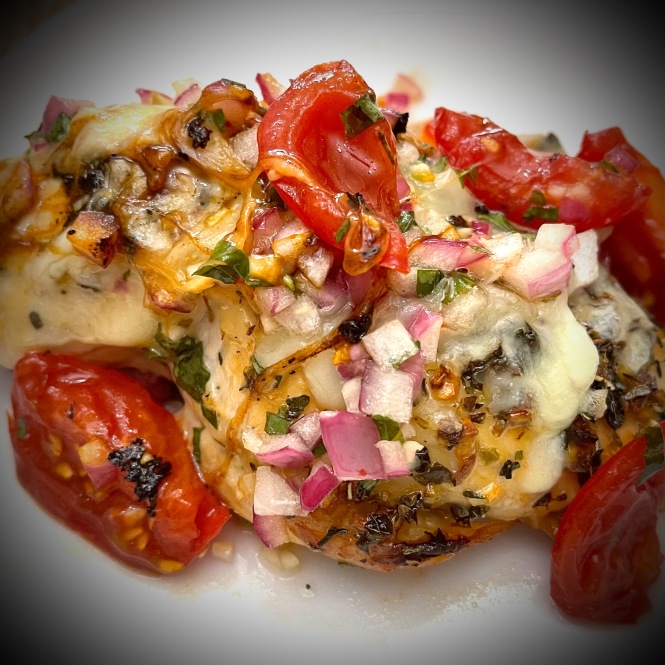

















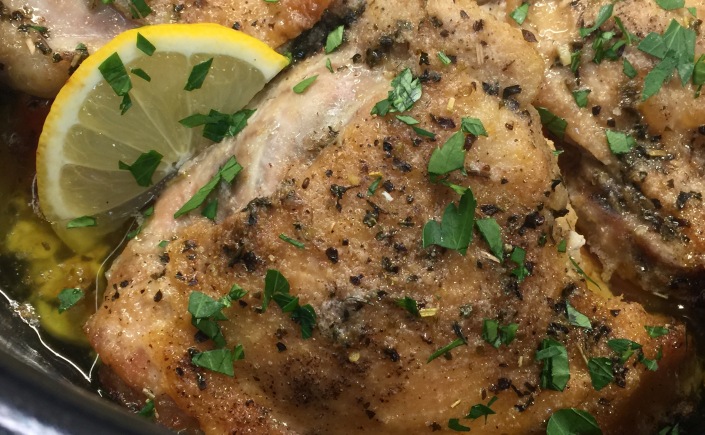
 Lesson Learned 1 – Recipes are designed to be guides, not gospel: The instructor in one of my more recent cooking classes said this and it really struck home with me. When you are making something savory, make the recipe your own. You don’t have to follow the recipe exactly ingredient by ingredient. Now mind you, this is not the case when you’re baking – you need to be precise with those recipes. But savory recipes can take on a life of their own depending upon your likes and dislikes. So feel free to experiment. Some of my most popular recipes were a result of doing just that.
Lesson Learned 1 – Recipes are designed to be guides, not gospel: The instructor in one of my more recent cooking classes said this and it really struck home with me. When you are making something savory, make the recipe your own. You don’t have to follow the recipe exactly ingredient by ingredient. Now mind you, this is not the case when you’re baking – you need to be precise with those recipes. But savory recipes can take on a life of their own depending upon your likes and dislikes. So feel free to experiment. Some of my most popular recipes were a result of doing just that.
































 Lesson Learned 1 – Buy chicken breasts with skin and ribs and debone the chicken yourself: You want to do this for a couple of reasons. First it is much less expensive to buy chicken this way. Second by leaving the skin on it keeps the breast nice and moist during the slow roasting process. Invest in a good boning knife and regularly maintain it with a hand sharpening tool like the one pictured to the left. It is surprisingly inexpensive and will keep your knife nice and sharp for a long time and boning the chicken breasts will be a breeze. These days it’s pretty hard to find boneless breasts with the skin still on so this may be the only way to do it.
Lesson Learned 1 – Buy chicken breasts with skin and ribs and debone the chicken yourself: You want to do this for a couple of reasons. First it is much less expensive to buy chicken this way. Second by leaving the skin on it keeps the breast nice and moist during the slow roasting process. Invest in a good boning knife and regularly maintain it with a hand sharpening tool like the one pictured to the left. It is surprisingly inexpensive and will keep your knife nice and sharp for a long time and boning the chicken breasts will be a breeze. These days it’s pretty hard to find boneless breasts with the skin still on so this may be the only way to do it. Lesson Learned 2 – Use a rice mixture for an extra flavor boost: Go ahead, be adventurous and use a rice mixture instead of just plain white rice. You can use wild rice, basmati rice or the mixture that I use which is a combination of white, brown, wild and red rice and pictured to the right. You’ll be amazed at how it punches up the flavor volume and makes the dish even more interesting.
Lesson Learned 2 – Use a rice mixture for an extra flavor boost: Go ahead, be adventurous and use a rice mixture instead of just plain white rice. You can use wild rice, basmati rice or the mixture that I use which is a combination of white, brown, wild and red rice and pictured to the right. You’ll be amazed at how it punches up the flavor volume and makes the dish even more interesting.



































